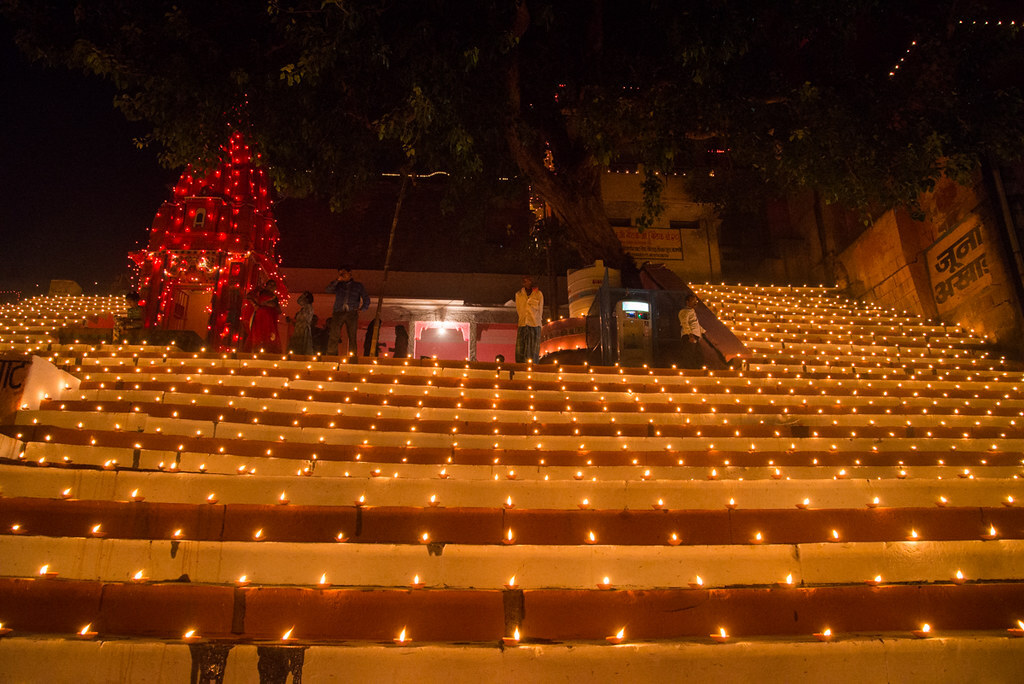Dev Diwali 2025 Date, Pradosh Muhurat and How It Is Celebrated in Varanasi
What is Dev Diwali? It is a special night on Kartik Purnima when people believe the gods visit the ghats of Kashi. The ghats glow with lakhs of diyas, Ganga Aarti, processions and music. This guide covers Dev Deepawali 2025 date and time, the story behind it, easy rituals, and shareable Dev Diwali wishes.

Also Read: Guru Nanak Jayanti 2025
Dev Diwali 2025: Correct Date and Shubh Muhurat
When is Dev Diwali 2025?
Dev Diwali will be celebrated on Wednesday, November 5, 2025, marking the sacred Kartik Purnima.
Purnima Tithi Begins: November 4, 2025 – 10:36 PM
Purnima Tithi Ends: November 5, 2025 – 06:48 PM
Pradosh Kaal Dev Deepavali Muhurat: November 5, 2025 – 05:15 PM to 07:50 PM
On this auspicious evening, devotees in Varanasi and across India illuminate the ghats with thousands of diyas, honoring Lord Shiva and celebrating the divine triumph of light over darkness.
Tip for Students: reach the ghat area before sunset so you can watch diyas being lit as the Dev Diwali 2025 Date evening begins.
Why Dev Diwali is Celebrated
People ask why Dev Diwali is celebrated. Tradition links this night to Lord Shiva’s victory over Tripurasura, also called Tripurotsav. Many also believe the deities descend to the Ganga to bless devotees. The heart of the festival is simple: light wins over darkness and good actions over harmful habits.
Highlights of Dev Deepavali You Should Not Miss
Ganga Aarti on the Ghats: Priests perform aarti with synchronized chanting and lamps.
A Sea of Lamps: Lakhs of diyas line more than a hundred ghats and temples
Boat Views: A slow boat ride shows the full riverfront as it glows
Processions and Music: Idols, dhols and devotional songs move through the lanes.
Temple Darshan: Kashi Vishwanath and other temples stay active with special aartis.
Simple Home Rituals for Students for Dev Deepavali 2025
If you cannot travel, you can still join Dev Diwali 2025 in a small way.
Clean and decorate: Make a small rangoli, place diyas at the door.
Evening deep daan: Light diyas during the Pradosh window for your city.
Short prayer: Thank the river that supports life and promise one helpful habit you will follow this term
Share sweets: Celebrate with family and send happy Dev Diwali messages to friends.
Dev Diwali Wishes You Can Share
“May the lamps of Dev Deepawali 2025 light your path with courage and kindness. Happy Dev Diwali.”
“Wishing you peace, focus and bright results as the ghats glow tonight. Happy Dev Diwali.”
“On Dev Diwali 2025, may your home shine with learning and good deeds.”
FAQs on When is Dev Diwali 2025 in Varanasi: Correct Date, Timings, Rituals and Wishes
1. What is Dev Diwali in simple words?
It is the night on Kartik Purnima when Kashi lights up with diyas and Ganga Aarti to honor the gods.
2. When is Dev Diwali in 2025 exactly?
Wednesday, 5 November 2025. Varanasi’s Pradoshakal Muhurat is 5:15 PM to 7:50 PM.
3. Is Dev Deepawali the same as Dev Diwali?
Yes, both names are used for the same festival in Varanasi.
4. Can I celebrate from home?
Yes. Light diyas during your local evening time, offer a short prayer, and send Dev Diwali wishes to friends.
5. Why do people light so many diyas?
The lamps honor the river and the divine, and they remind us to choose good actions and learning.







